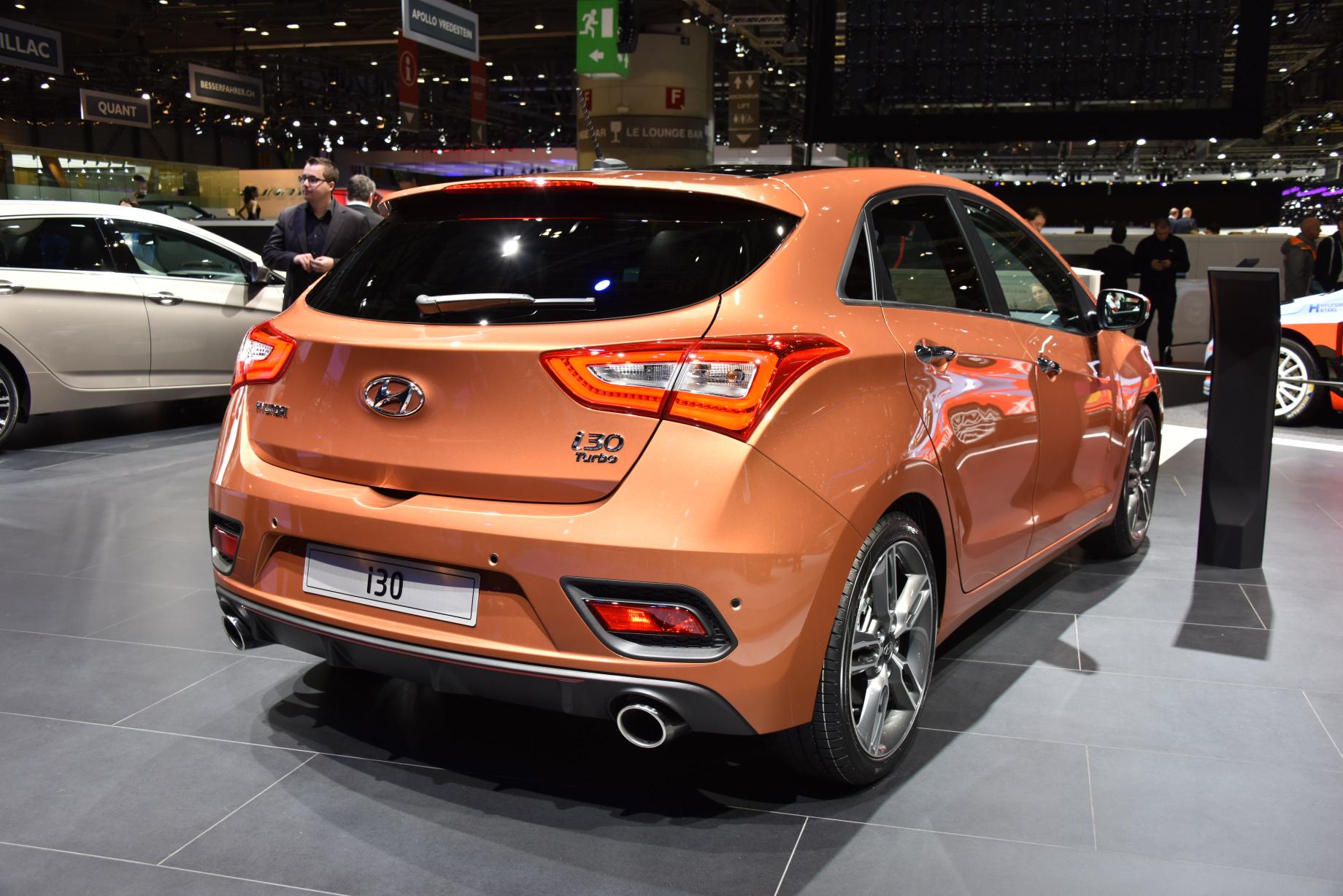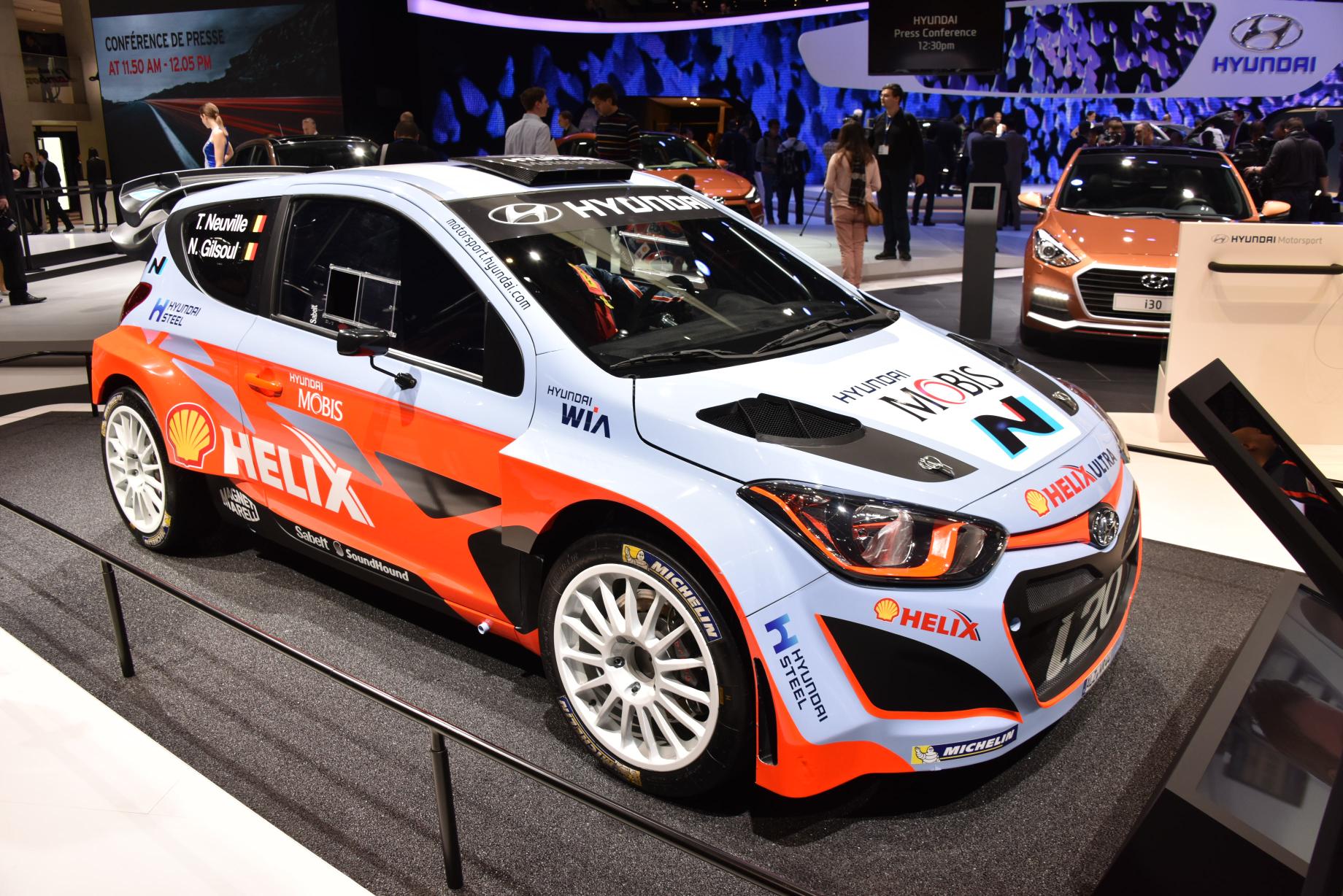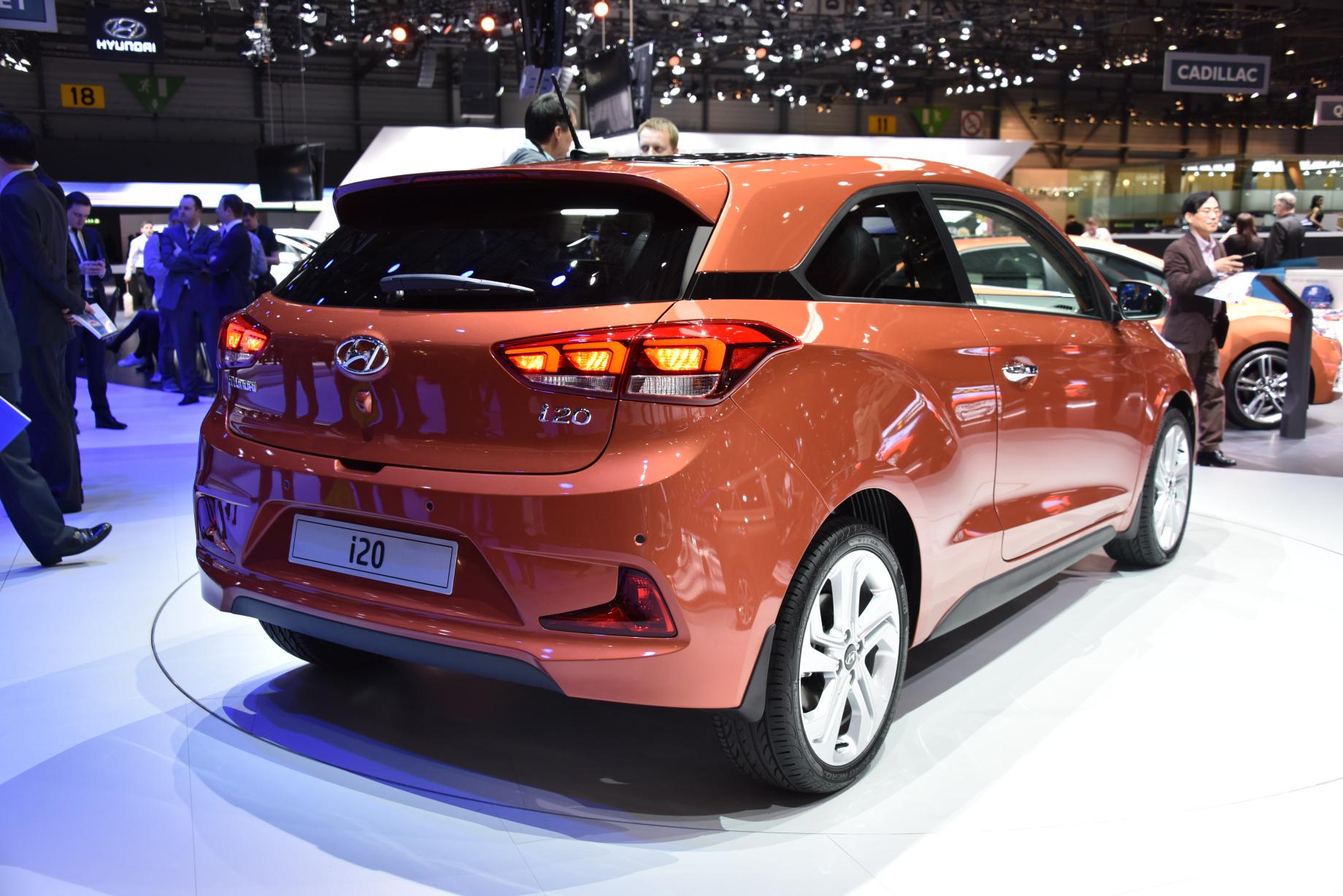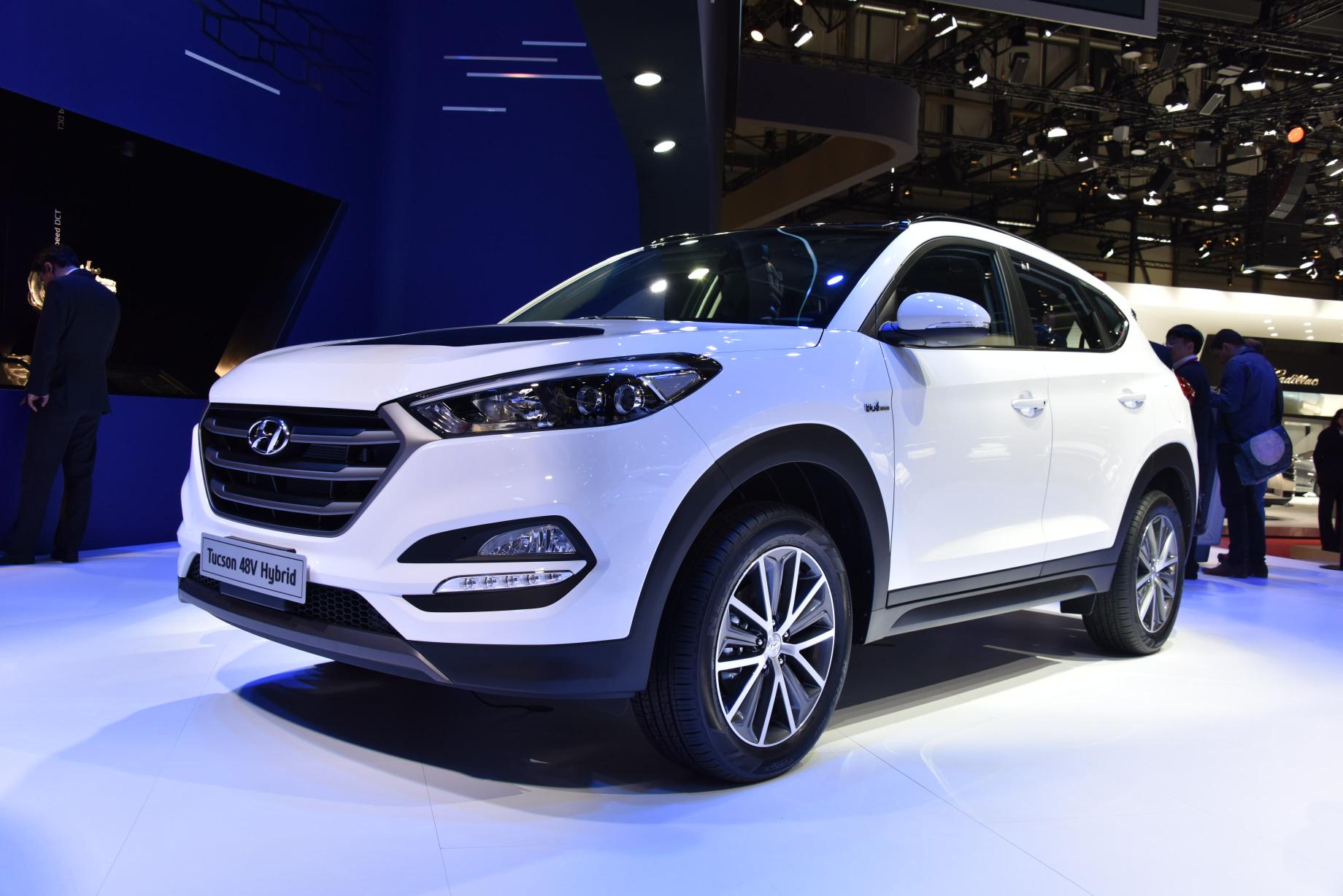
- World Premiere of All-New Tucson compact SUV and New ix20
- Public debuts for New Generation i20 Coupe, New i30, and New i40 ranges
- All-New Tucson 48V-Hybrid and Plug-in-Hybrid concepts on display
Geneva, 3 March 2015
Hyundai Motor revealed a host of new models at the 2015 Geneva Motor Show, including the world premiere of the All-New Tucson – Hyundai Motor’s bold and athletic compact SUV. Also on display for the first time is the New ix20 compact MPV. The New Generation i20 Coupe, New i30 and New i40 ranges hold their public debuts. The 2015 model line-up is the youngest Hyundai Motor has ever had in Europe. Hyundai Motor’s new technology capabilities are showcased in Geneva with two All-New Tucson fuel efficiency concepts – a 48V Hybrid and a Plug-in-Hybrid version – as well as a future connectivity cockpit concept.
“Hyundai Motor has high aspirations for the brand in Europe. The All-New Tucson is a bold new car that brings to life our claim ‘New Thinking, New Possibilities’ and will change perceptions of the brand,” commented Jochen Sengpiehl, Vice President Marketing at Hyundai Motor Europe.
All-New Tucson – Shifting perceptions through bold design and technology
Hyundai Motor has delivered more than one million SUVs to European customers, affirming the company’s credentials in the growing SUV market in Europe. The All-New Tucson will be of high importance to Hyundai’s European business, as the C-SUV segment accounted for 22% of the company’s sales in 2014.
The All-New Tucson adopts the strong proportions and profile of an SUV, while the design confidently creates a sense of the vehicle being sleek and agile. The front is dominated by the Hyundai signature hexagonal front grille, which connects with the LED headlamps to create a distinctive identity. The expressive ‘Z’ character-line above the rear wheel arches creates a sculptural side profile and a powerful stance, whereas the rear has a clean design with horizontal lines that flow from the rear wheel arches, accented by slim tail lights.
The All-New Tucson is built on a completely new platform that optimises cabin space for passengers and provides a substantial 513 litres of luggage capacity. New soft-touch, high-quality materials across the cabin surfaces, as well as extensive ergonomic development, ensures that every occupant enjoys the refined cabin ambience.
In terms of safety, All-New Tucson is one of the most comprehensively equipped vehicles in its segment – featuring numerous active electronic driving aids like an Autonomous Emergency Braking system, Lane Keeping Assist System, Rear Traffic Cross Alert, Blind Spot Detection, Speed Limit Information Function and an Active Hood System.
The new chassis of the All-New Tucson has been developed for European customers with a focus on ride comfort without compromising driving dynamics. The new rack-mounted motor-driven power steering is precise and direct while the new suspension and dampers offer high levels of comfort and compliance for a smooth ride.
The All-New Tucson will be available with one of the widest powertrain ranges in its class, including a new turbocharged 175 PS (1.6-litre) T-GDI engine with six-speed manual or seven-speed dual-clutch transmission, plus a petrol 132 PS (1.6-litre GDI) unit and three diesels: 115 PS (1.7-litre), 136 PS (2.0-litre) or 186 PS (2.0-litre).
World premiere of New ix20 comes with refreshed design and technical innovations
Hyundai’s New ix20 builds on all the qualities that made the original model so popular, introducing refreshed design, new technologies and an enhanced engine line-up, to ensure the spacious B-MPV retains its appeal across Europe.
Hyundai’s design team added new bi-function projector headlamps and LED rear combination lamps to create a modern appeal. A new hexagonal front grille design aligns New ix20 with Hyundai’s latest family face. The New ix20 is available with diesel and gasoline engines ranging from 77 PS to 128 PS and a six-speed automatic transmission for the 1.6-litre gasoline engine.
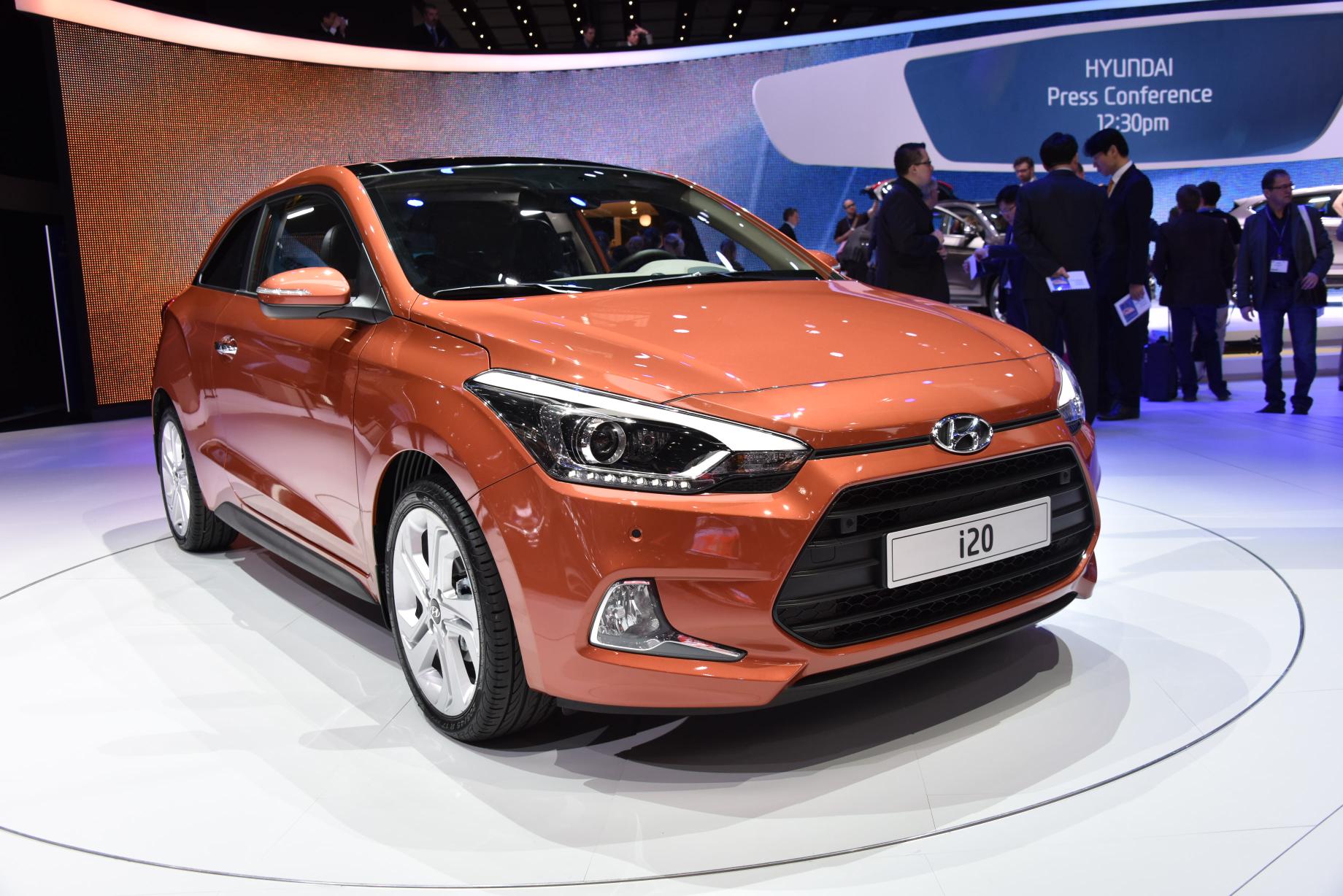
New Generation i20 Coupe – differentiated by design
For the first time, Hyundai has created a three-door B-segment car that is significantly different from the five-door model – the New Generation i20 Coupe. Its dynamic exterior styling and striking interior design are crafted to attract young, lifestyle-oriented consumers. The unique silhouette has a 25 mm lower roofline and more angled A-, B-, and C-pillars, plus unique 17-inch alloy wheels to further emphasize the model’s athletic stance while retaining the generous interior space and interior flexibility of its five-door sibling.
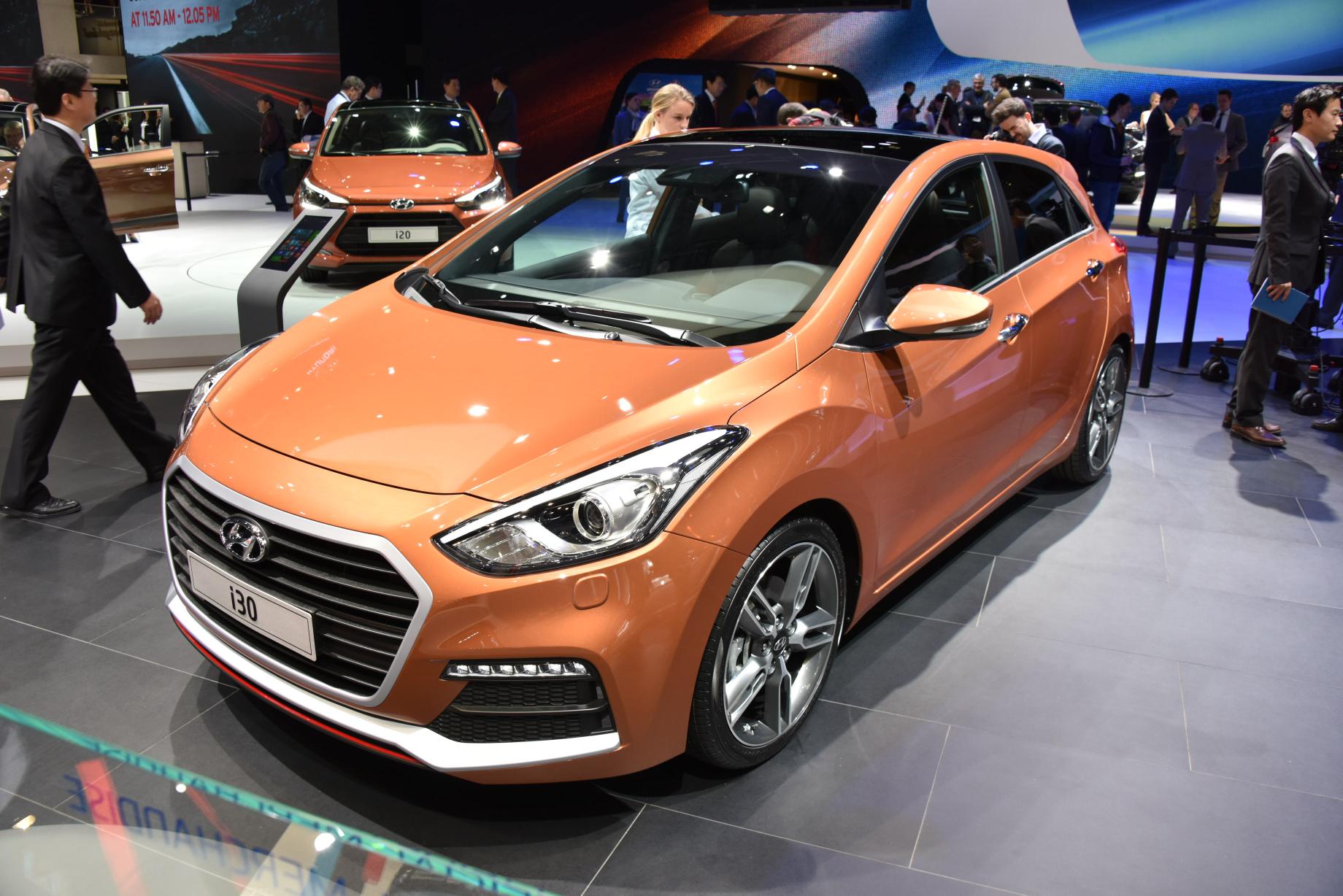
New i30 line-up with New i30 Turbo topping model range
Three years after the European launch of the second-generation Hyundai i30 five-door, three-door and wagon, Hyundai is introducing the New i30 model range. On sale this month, the New i30 line-up boasts enhanced styling, improved engine efficiency, a new seven-speed dual-clutch transmission, new safety and convenience features – plus the addition of a new high performance model – the 186 PS powered New i30 Turbo. New safety and convenience features include Lane Departure Warning System (LDWS), Smart Parking Assist System (SPAS), which assists with bay and parallel parking, and segment-first new ventilated front seats.
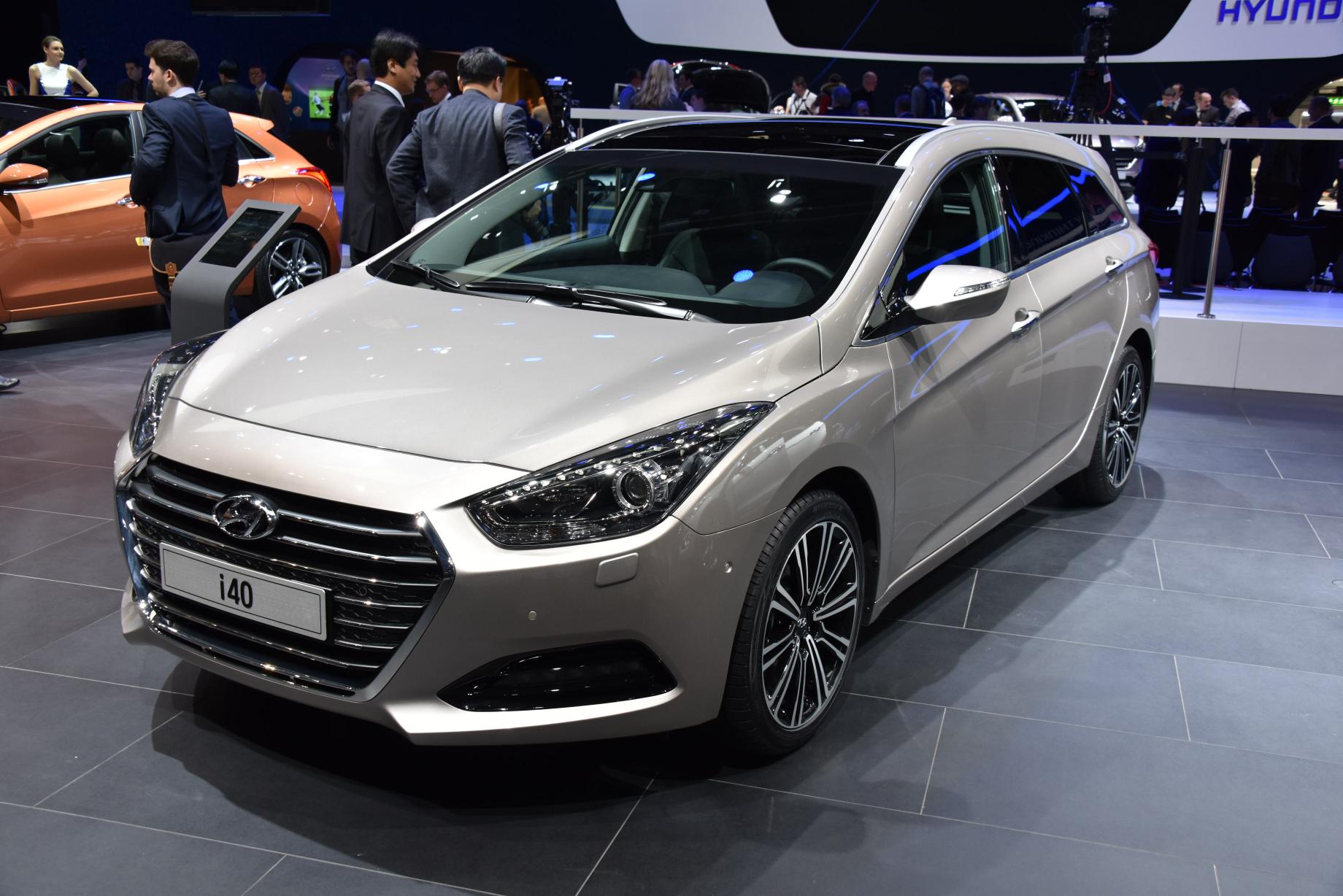
New i40 range for 2015 is refined in all areas
After achieving more than 100.000 sales of its D-segment sedan and wagon since launch in Europe, Hyundai is introducing the New i40 range for 2015. The enhanced models feature refreshed styling, four upgraded engines, a seven-speed dual-clutch transmission, a Rear Electronic Damping System and Advanced Traction Cornering Control for improved ride and handling. New Bi-Xenon headlamps, a Smart High Beam and a Speed Limit Information Function improve safety and convenience.
Zero emissions ix35 Fuel Cell
Hyundai is also showing the world’s first mass-produced fuel cell vehicle – its ix35 Fuel Cell – at Geneva. In Europe Hyundai leads the commercialisation of fuel cell electric vehicles with a certified dealer network established in 11 markets. Now available to consumers and corporate customers throughout all European countries with refuelling infrastructure, it is the most affordable FCEV in Europe. In key markets like Denmark, Norway and the Netherlands Hyundai Motor offers a Five-Year All-Inclusive package that comprises insurance, maintenance, warranty, hydrogen refuelling and valet service.
New fuel efficiency concepts –48V Hybrid and Plug-in-Hybrid
The two new concept vehicles displayed are based on the All-New Tucson. Both concepts showcase possible powertrain technologies for future Hyundai models. The 48V Hybrid especially suits larger cars and SUVs. Its 48-volt lithium-ion battery and 14 PS electric motor boost power by 10% and reduce emissions significantly while the 48V hybrid system costs just a quarter of a full hybrid solution to build.
The Plug-in Hybrid Electric Vehicle (PHEV) concept is able to travel over 50 km in all-electric mode and can recharge in as little as two and a half hours (fast charge) and five hours using a standard outlet. The concept is fitted with a 10.7 kWh lithium-ion polymer battery pack, and a 68 PS electric motor, which supports the 115 PS 1.7-litre diesel engine and the seven-speed dual-clutch transmission. Combining these power sources gives the concept car estimated CO2-emissions of less than 48 g/km.
Innovative connectivity features
Hyundai is continually exploring new ways to improve the vehicle ownership experience for its customers. The Connectivity Cockpit Concept holds a collection of new advanced technologies including wearable devices, integration of car generated data, rear seat child care and 3D-gesture controls. These assets offer an insight to Hyundai’s new ways of thinking to provide customers with value beyond expectations, setting out ways that customers could control and interact with its vehicles in the future.
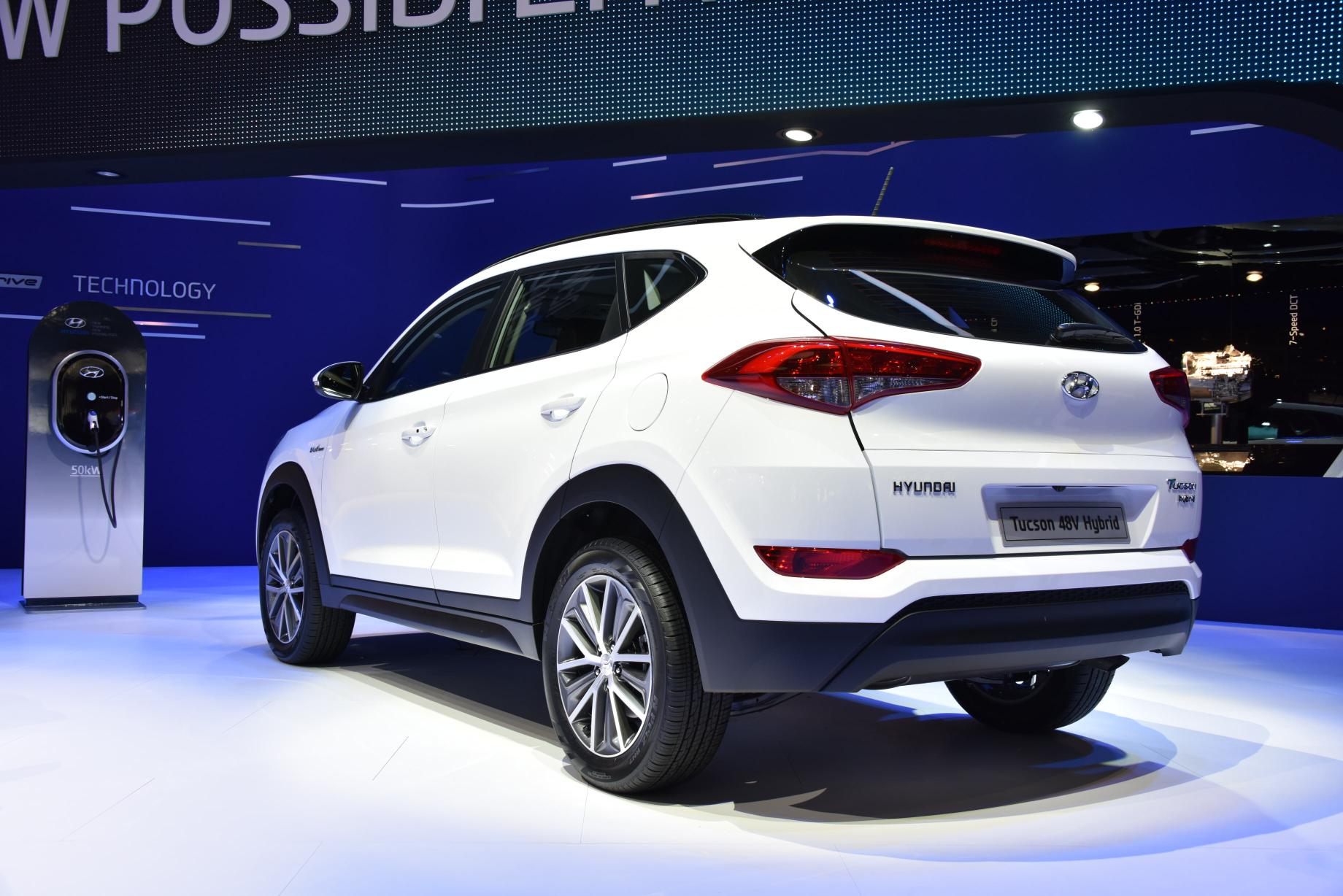
- All-New Tucson 48V Hybrid Concept shows smart efficiency improvements
- All-New Tucson Plug-in-Hybrid Concept to emit less than 48 g/km CO2
- Hyundai displays innovative connectivity features including wearable and gesture control technologies
Geneva, 3 March 2015
Hyundai Motor showcases a wide range of innovative fuel efficiency and connectivity technologies at the 2015 Geneva Motor Show. While two fuel efficiency concepts underline Hyundai’s capabilities in advanced drivetrain technologies, the connectivity cockpit concept and wearables on display grant a view of how controlling and interacting with Hyundai vehicles could look in the future.
All-New Tucson 48V Hybrid Concept
Based on the All-New Tucson platform, the48V Hybrid technology is a smart and cost efficient way to cut fuel consumption and CO2 emissions significantly. Compared to a full hybrid system, the 48V system delivers similar efficiency, for only a quarter of the cost and is just another example of Hyundai’s engineering capabilities under the premise of ‘New Thinking, New Possibilities’.
Based on a 2.0-litre diesel model with 136 PS and six-speed manual transmission, the show car promises to boost power by 10 %, while emitting only 109 g/km CO2 emissions. The 48V Hybrid Concept delivers a lively performance as the combined power pack (136 PS gasoline engine plus a 14 PS electric motor) generates 150 PS and 413 Nm of torque.
Especially suited to fitment in larger cars and SUVs, the show car’s 48V Hybrid technology comprises a Hybrid Starter Generator (HSG) – an electric motor replacing the conventional starter – an inverter and a low voltage DC/DC converter. The HSG supports the diesel engine with its additional output, enables the ISG to restart the engine with almost no noise or vibration and acts as a generator during deceleration, recharging the 48-volt lithium-ionbattery. The new hybrid system adds a modest 20 kg to the vehicle weight.
All-New Tucson Plug-in-Hybrid Concept
Hyundai’s concept of a plug-in-hybrid vehicle (PHEV), also based on the All-New Tucson platform, is equipped with a 1.7-litre diesel engine and a seven-speed dual-clutch transmission, both available in the All-New Tucson line-up. The engine generates 115 PS and is accompanied by a 68 PS electric motor and a 10,7 kWh lithium-ion polymer battery, which enables the car to drive in pure-electric mode for more than 50 km. The combined engine has a maximum power of 183 PS and delivers an impressive 474 Nm of torque. Hyundai engineers estimate CO2 emissions of less than 48 g/km while the vehicle’s performance capabilities could be increased significantly.
The electric motor is placed at the rear of the car and drives the rear axle, whereas the diesel engine drives the front axle. This setup enables the car to switch between rear-wheel drive, front-wheel drive and all-wheel drive depending on the driving situation.
For greater driver engagement and choice, the PHEV concept is equipped with a 4-mode drive selection. The ‘Auto’ mode operates all systems for highest fuel efficiency. The ‘Zero Emission Vehicle’ (ZEV) mode uses only the electric motor – if the battery charge level is sufficient. This mode is particularly useful when leaving the house quietly in the morning or when driving in low-speed city traffic. In ‘4WD’ mode both engines operate to enable all-wheel drive functionality, while in ‘Sport’ the performance characteristics of both engines are prioritised.
Innovative connectivity features
Hyundai is continually exploring new ways to improve the vehicle ownership experience for its customers. The Connectivity Cockpit Concept holds a collection of new advanced technologies including wearable devices, integration of car generated data, rear seat child care and 3D-gesture controls. These assets offer an insight to Hyundai’s new ways of thinking to provide customers with value beyond expectations, setting out ways that customers could control and interact with its vehicles in the future.
A wearable device like a smartwatch, paired with the in-car-system, can monitor the driver’s status (heart rate and alertness), recommending rest periods to promote safe driving. It can also inform the driver about blind-spots, alert them to appropriate following distances and provide navigation-details.
Also on display is Hyundai’s content connectivity feature, which provides a calendar ‘life-log’ of daily driving activities, delivering integrated information from vehicle, cloud, tablet, smartphone and wearable devices. It can display POI suggestions by ranking driver preferences, while also listing fuel stations near the user’s route.
The rear seat child care function uses innovative tablet features to monitor passengers and children via a mini-camera and the head unit screen on the center stack. The system also has tablet-based ‘co-pilot/navigator’ controls, which allow a passenger to interact with vehicle infotainment and comfort features, such as air-conditioning, while the driver’s eyes remain on the road.
A fourth area of focus for the Geneva display is the company’s 3D hand-gesture controls, showcased in the Connectivity Cockpit Concept. The innovative system employs infrared and camera sensors to recognise driver’s hand commands to select navigation, infotainment, audio, air conditioning and even smartphone connectivity functions. While driving, only basic commands will be available, whereas when at standstill and neutral mode, the full range of functions will be accessible. This intuitive gesture interface provides the driver with a host of controls, while keeping their eyes on the road and demonstrates clearly Hyundai’s future vision for human machine interface.
